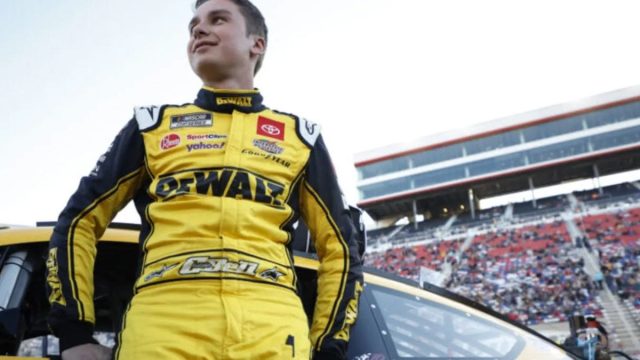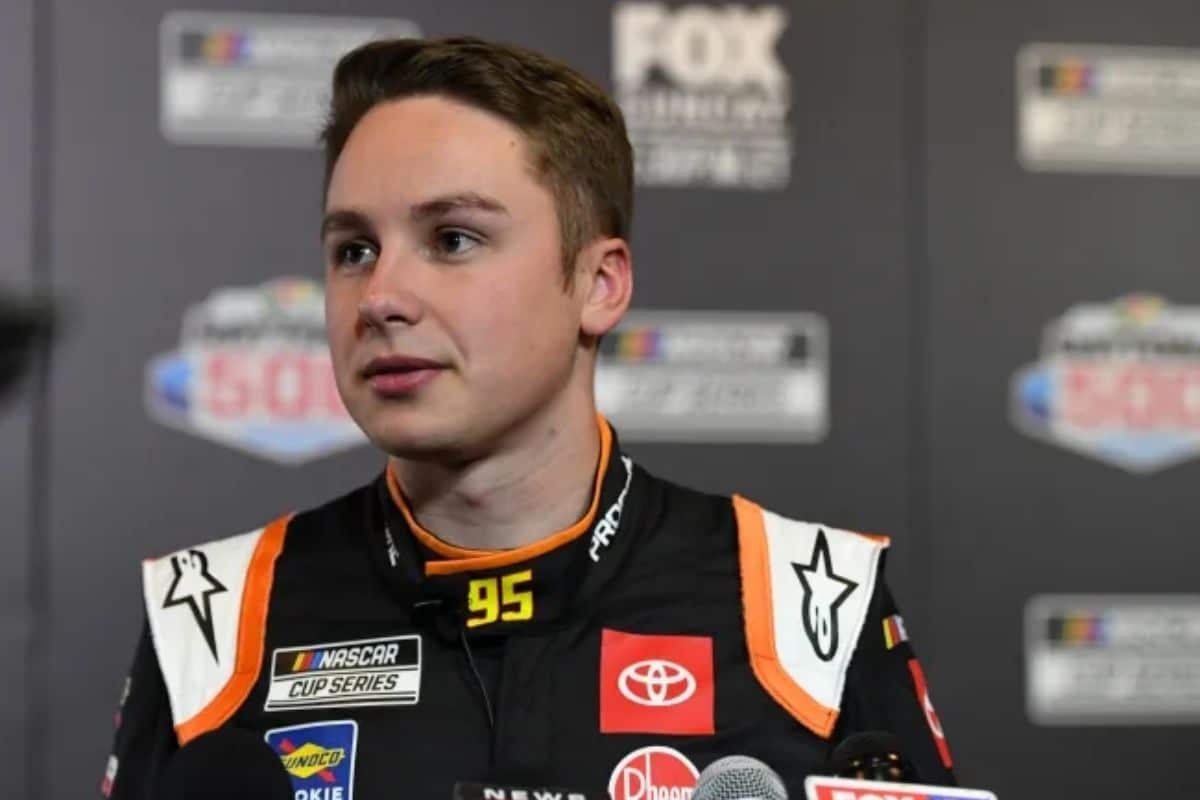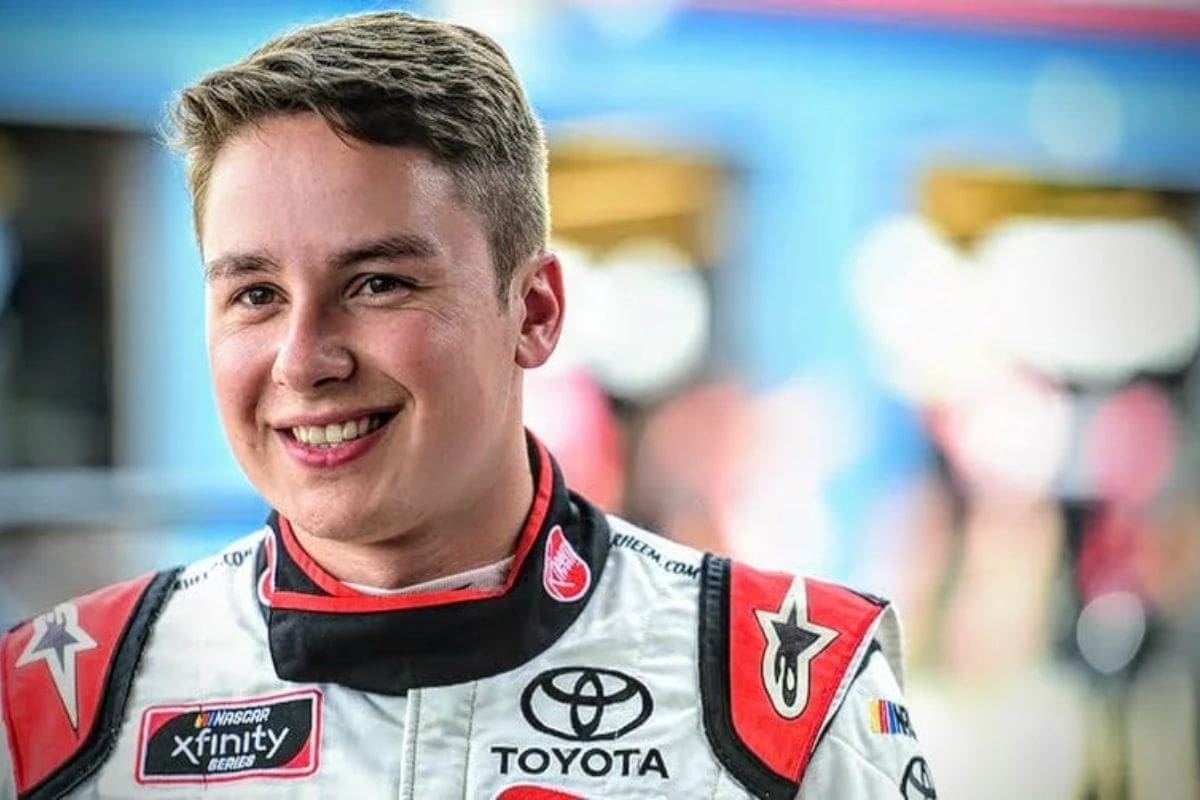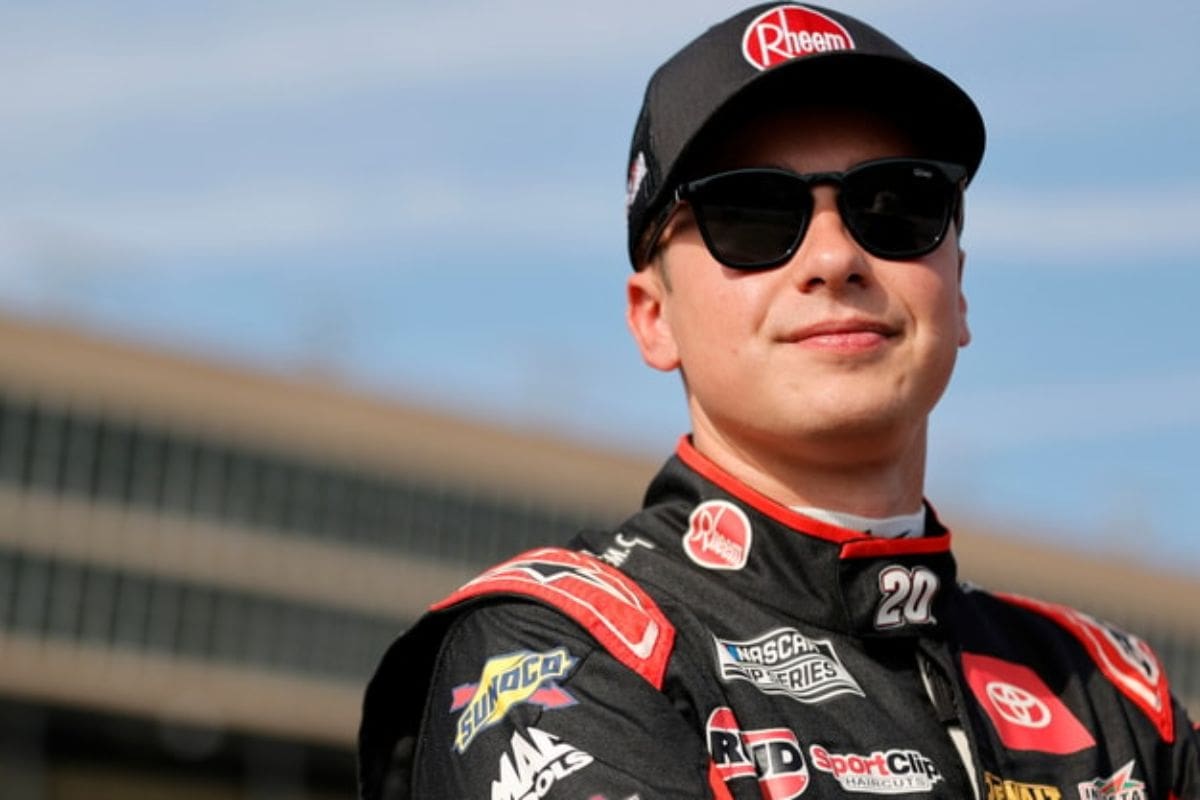Christopher Bell Exposes NASCAR’s Fuel-Saving Tactics: Christopher Bell‘s recent insights about NASCAR’s fuel-saving tactics have sparked a fascinating debate within the motorsports community. His detailed account of throttle control, coasting, and the strategic planning involved highlights the critical balance drivers must achieve between speed and fuel efficiency. As Bell uncovers the layered complexities behind these tactics, it becomes evident that the evolving strategies are not just about conserving fuel but also about gaining a competitive edge. This intricate dance of precision and planning raises several questions about the future of NASCAR racing and its impact on all the drivers and fans.
Key Highlights
- Christopher Bell highlights throttle control and strategic coasting as crucial for NASCAR fuel efficiency.
- Bell emphasizes lifting off the accelerator and shutting off the engine under yellow flags to save fuel.
- Fuel-saving tactics require cohesive team effort and strategic decision-making.
- Bell’s insights reveal the technical and strategic depth of modern NASCAR fuel-saving methods.
- The shift towards fuel-saving has transformed NASCAR race dynamics and outcomes.
Introduction and Shift in NASCAR’s Superspeedways
The landscape of NASCAR’s Superspeedways has undergone a significant transformation as fuel-saving tactics increasingly dictate the dynamics of these high-octane races. Superspeedways, known for their massive size and the thrilling speeds, have historically been the stage for some of the most exhilarating moments in NASCAR history.
However, recent trends in fuel-saving strategies have begun to redefine how these races unfold, altering the approach of the drivers and the experience of the fans. In the past, drivers like the legendary Dale Earnhardt Sr. would often charge from the back of the pack to the front, providing a spectacle of raw racing skill.
Today’s races, however, are frequently characterized by a more calculated and conservative approach. Drivers are now required to carefully manage their fuel consumption to gain a competitive edge, often leading to periods of less aggressive racing. This shift is partly attributed to the advent of next-generation cars, which have brought with them a new set of technical considerations and strategic imperatives.
Fuel-saving tactics have become an integral part of race strategy, influencing decisions on when to pit and how aggressively to drive. The goal is to stretch fuel mileage to its limits, often resulting in a more measured pace that can reduce the frequency of the dramatic overtakes and high-speed chases that fans have come to expect.
Controversy and Dynamics Shift
Rising tensions among drivers and teams have ignited a heated debate over the impact of fuel-saving tactics on the essence of NASCAR racing. The increasing reliance on fuel-saving strategies has not only influenced race outcomes but also led to a noticeable shift in race dynamics, sparking controversy within the community. With drivers like Christopher Bell openly voicing their frustrations, the conversation surrounding these tactics has reached a pivotal point.
The controversy lies in the perceived deviation from traditional racing values. Fuel-saving, once a peripheral component, has now become a central strategy. This shift has led to races where conserving fuel supersedes outright speed and aggressive driving. For many purists, this is a departure from the high-octane ethos that has long defined NASCAR. Critics argue that it reduces the competitive integrity of the sport, turning races into strategic fuel management exercises rather than tests of driver skill and vehicle performance.
The impact on race dynamics is significant. Races that were once won through sheer speed and daring tactics are now often decided in the pits, with teams carefully calculating fuel consumption and potential savings. This has led to a more cautious approach on the track, with drivers often transitioning into fuel-saving modes rather than pushing their machines to the limit. The result is a different kind of spectacle, one that some fans and drivers find less thrilling.
Insights into Fuel-Saving Strategies
Exploring the complexities of fuel-saving strategies reveals a detailed approach where drivers must expertly balance throttle control and strategic coasting to optimize fuel efficiency without compromising race position. Christopher Bell, the seasoned driver of the #9 Toyota for Joe Gibbs Racing, sheds light on these intricate tactics.
According to Bell, ‘There’s really only one way to save fuel, and that’s to lift off the accelerator and use less throttle time.’ This fundamental principle highlights the necessity of precise throttle management, where even the slightest modulation can significantly influence fuel consumption rates.
Bell’s insights extend to specific scenarios such as yellow flag conditions. Under these circumstances, drivers can employ the technique of pushing in the clutch and shutting off the engine. This method greatly reduces fuel usage, enabling drivers to stretch their fuel mileage and potentially avoid an additional pit stop. This approach is particularly advantageous when approaching stage breaks, allowing drivers to maintain their position while conserving precious fuel.
“In some cases, you might be right on the edge of making it to the stage break without having to make your green flag pit stop.” – (Bell)
Moreover, during green flag conditions, strategic coasting becomes crucial. Drivers must anticipate braking zones and corners well in advance, lifting off the throttle early while maintaining sufficient speed to remain competitive. This delicate balance requires a harmonious blend of intuition and skill, often honed over years of racing experience.
“That’s why we’re saving so much fuel on superspeedways.” – (Bell)
The integration of such fuel-saving strategies not only extends the car’s endurance but also impacts the race strategy as a whole. It demands a cohesive effort from the entire racing team, including spotters and crew chiefs, to synchronize real-time decisions with long-term race objectives. Bell’s insights provide a window into the sophisticated interplay between driver expertise and fuel management, highlighting the multifaceted nature of modern NASCAR racing.
View this post on Instagram
Technical Aspects Influencing Strategies
Exploring the technical aspects influencing fuel-saving strategies requires a thorough examination of the aerodynamic and mechanical features of modern NASCAR vehicles. The evolution of these features has had a significant impact on how teams approach fuel management, particularly during important race segments.
One salient factor is the aerodynamic design of the wheel wells. Shaped to create substantial aerodynamic drag, these areas force cars to consume more fuel, particularly at high speeds. By strategically lifting off the throttle, drivers can mitigate this drag, thereby conserving fuel and gaining a competitive edge. This tactic is particularly important on superspeedways, where high-speed conditions increase fuel consumption.
Additionally, the introduction of the next-gen car has ushered in a series of technological advancements that further influence fuel-saving strategies. The shift from a five-lug to a single-lug wheel system is particularly remarkable. This change has streamlined pit stops, reducing the time spent in the pit stall and allowing teams to focus more on fuel efficiency. Such mechanical innovations necessitate a re-evaluation of traditional fuel strategies, making fuel management an even more critical element of race planning.
Driver and Fan Reactions
The technical innovations influencing fuel-saving strategies have not only reshaped race dynamics but also elicited a range of reactions from drivers and fans both. As fuel-saving has escalated in importance, drivers have voiced a variety of sentiments, from frustration to acceptance, reflecting a detailed landscape within NASCAR.
Kyle Busch has been particularly vocal, describing the slower-paced races necessitated by fuel-saving as ‘pathetic.’ Busch’s sentiment encapsulates a broader frustration among drivers who feel constrained by the need to prioritize fuel efficiency over raw speed. ‘I felt disgraceful myself as a race car driver wanting to go fast and lead laps and win the Daytona 500,’ Busch lamented, highlighting a fundamental clash between traditional racing ethos and modern strategic necessities. His comments highlight the emotional and professional toll that these strategies can exact on drivers.
Chase Elliott offers a historical perspective, noting that while fuel-saving has always been part of superspeedway strategy, its prevalence has surged. “It wasn’t talked about because the entire field wasn’t doing it.” Elliott remarked, pointing out that tight regulations have democratized the practice. This shift has transformed fuel-saving from an obscure tactic to a mainstream strategy, fundamentally altering competitive dynamics.
Brad Keselowski provides a counterpoint, expressing bewilderment over the controversy. “I didn’t understand why my fellow competitors were upset about the fuel-saving strategy during the Daytona 500,” he remarked, suggesting that strategic coasting is a logical adaptation to the sport’s evolving regulations.
Fans, too, are divided. Many echo Busch’s sentiment, decrying the slower races as a departure from the high-octane excitement they cherish. Yet, for some, the strategic depth adds a new layer of intrigue.
News in Brief: Christopher Bell Exposes NASCAR’s Fuel-Saving Tactics
Christopher Bell’s insights provide a comprehensive examination of the sophisticated fuel-saving tactics used in NASCAR. The incorporation of throttle control, coasting, and strategic decisions highlights the detailed planning and coordination necessary for maximizing performance while managing fuel consumption.
This intricate approach shows the progression of NASCAR racing, where the interaction between speed and efficiency is crucial. Therefore, Bell’s observations offer a deeper insight into the technical and strategic intricacies that characterize modern NASCAR competitions.
Our Reader’s Queries
Q. What is Christopher Bell’s salary?
A. According to various sources, Christopher Bell’s salary is estimated to be around $850,000 annually.
Q. What does Christopher Bell drive in NASCAR?
A. Christopher Bell pilots the No. 20 Toyota for Joe Gibbs Racing in the NASCAR Cup Series. With a career tally of eight victories at the Cup level, his latest triumph came in May 2024 at Charlotte Motor Speedway during the Coca-Cola 600. Bell secured his inaugural Cup Series win in 2021 at the challenging Daytona International Speedway Road Course.
ALSO READ: Christopher Bell Critiques Kevin Harvick’s Driving Technique



